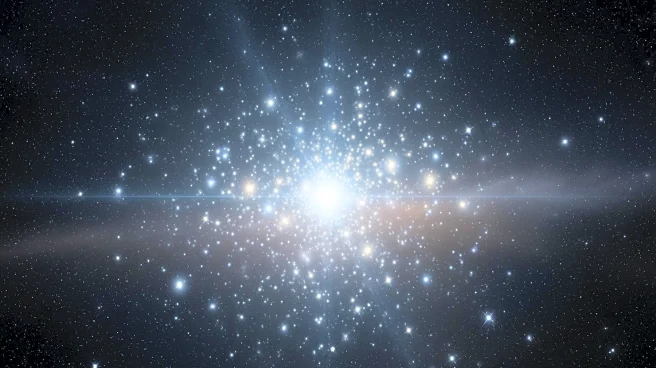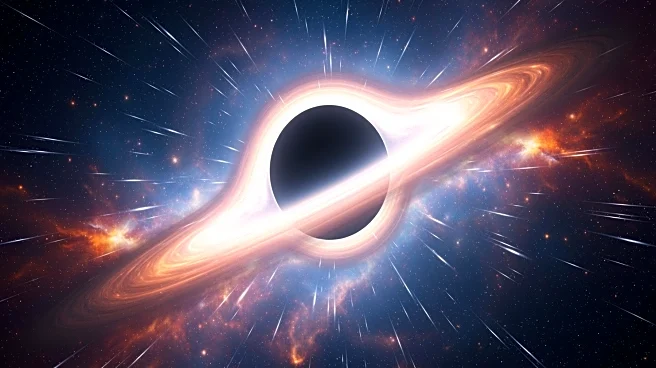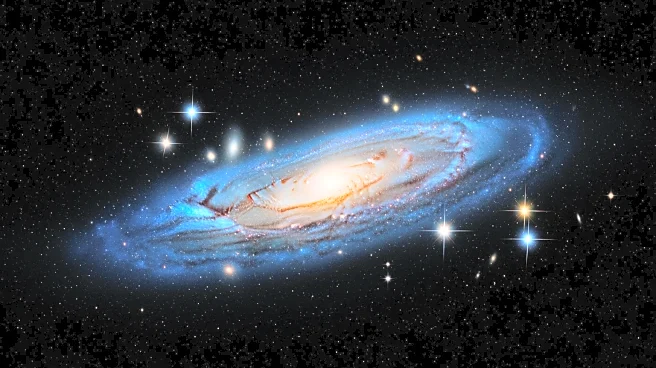What's Happening?
Astronomers at the University of North Carolina at Chapel Hill have discovered that the Pleiades star cluster, commonly known as the 'Seven Sisters,' is part of a much larger group of stars. Using data from NASA's Transiting Exoplanet Survey Satellite
(TESS) and the European Space Agency's Gaia space telescope, the researchers identified thousands of additional stars related to the Pleiades, forming what they call the Greater Pleiades Complex. This discovery reveals that the Pleiades is about 20 times larger than previously thought. The study utilized stellar rotation as a 'cosmic clock' to identify these stars, as younger stars spin faster than older ones. This method allowed the team to locate many long-lost members of the Pleiades spread far beyond the central cluster.
Why It's Important?
The discovery of the Greater Pleiades Complex has significant implications for astrophysics and our understanding of stellar formation. The Pleiades has been a key reference point for studying young stars and exoplanets, and it holds cultural significance in various societies. This research provides a new method to uncover hidden relationships among stars, suggesting that many star clusters may belong to larger stellar families. Understanding these structures can help scientists investigate the origins of the Sun and other stars, offering insights into the environments in which solar systems form and evolve.
What's Next?
The researchers plan to use their findings to map other regions of the Galaxy, potentially uncovering more extensive stellar families. This method may eventually help scientists determine whether the Sun formed within a similarly large stellar group. The study opens new avenues for exploring the hidden architecture of the Milky Way and understanding how solar systems, including our own, take shape over time.
Beyond the Headlines
The cultural significance of the Pleiades extends beyond scientific interest, appearing in historical texts and modern symbols. This discovery may influence how societies perceive these stars and their role in cultural narratives. Additionally, the research highlights the importance of advanced technology in uncovering cosmic structures, demonstrating the value of international collaboration in space exploration.













